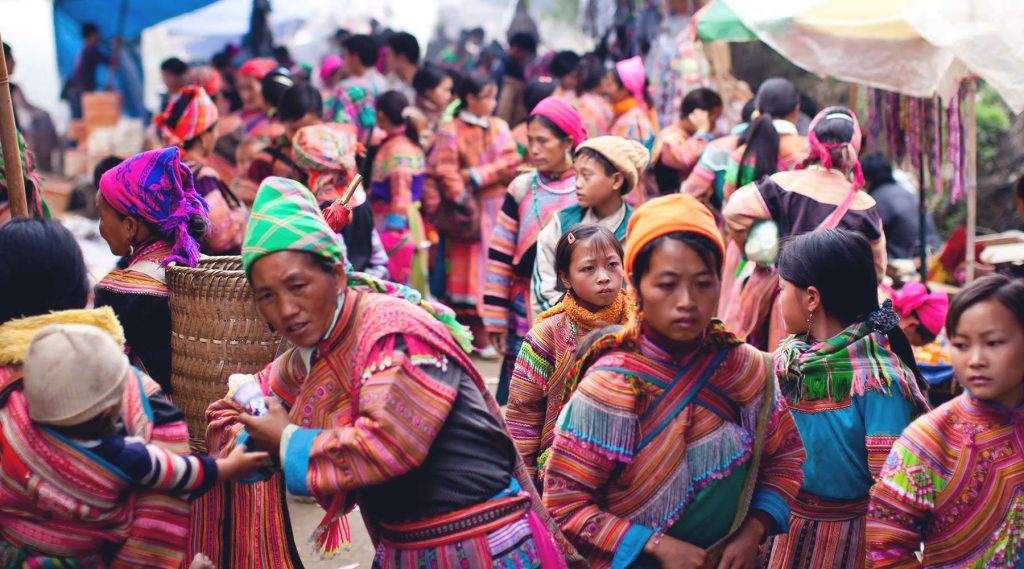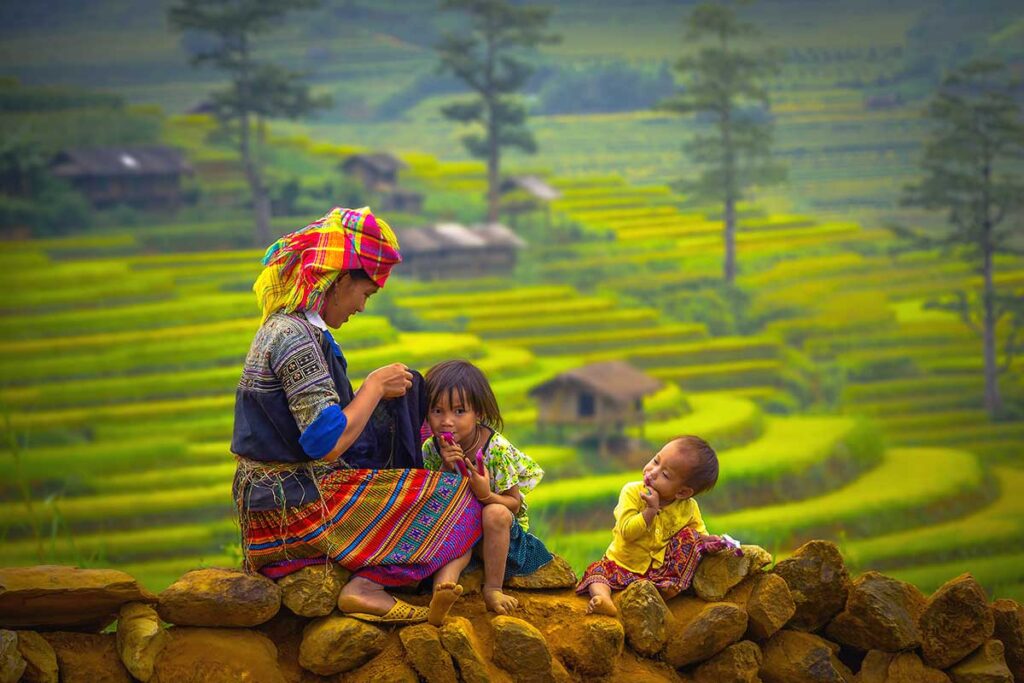Overview of ethnic markets around Sapa
These are the 8 best known and less well-known markets around Sapa:
| Market | Which day | Distance from Sapa | Location |
|---|---|---|---|
| Sapa Market | Every day* | – | Google Maps |
| Coc Ly Market | Tuesday | 80 km | Google Maps |
| Sin Cheng Market | Wednesday | 130 km | Google Maps |
| Cao Son Market | Wednesday | 90 km | Google Maps |
| Lung Khau Nhin Market | Thursday | 80 km | Google Maps |
| Can Cau market | Saturday | 120 km | Google Maps |
| Bac Ha Market | Sunday | 100 km | Google Maps |
| Muong Hum Market | Sunday | 40 km | Google Maps |
Map of the Sapa markets
Below you can find a map with the most famous markets around Sapa.
When to visit the markets around Sapa
Most markets around Sapa are only held once a week—usually in the morning on a specific day. While there might be a small daily market in some villages, the weekly market is the main event when ethnic people from all over the region gather. It’s a lively mix of trade, tradition, and social interaction that’s unlike anything you’ll see in towns like Sapa itself.
These markets start very early in the morning and are already winding down before noon. That means if you leave Sapa too late, you may arrive after the best part is already over. Be sure to plan ahead based on the day and time of the market to avoid missing it.
Why you should visit a minority market near Sapa
A truly unique cultural experience
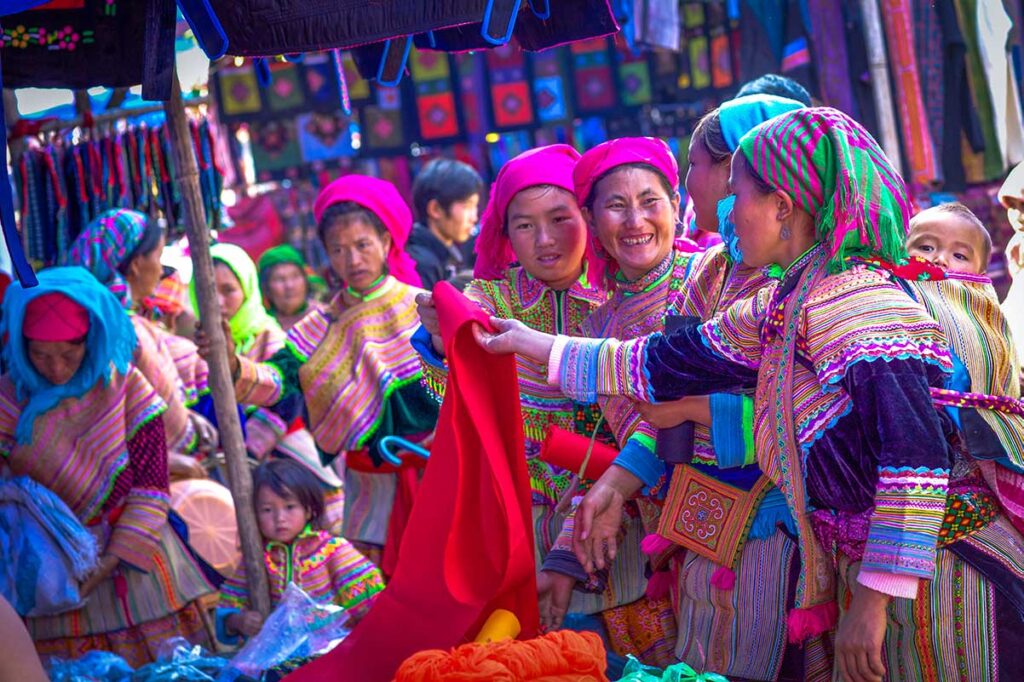
The weekly markets are a vivid window into the daily life and traditions of Sapa’s ethnic minorities. People from different villages—often dressed in their most colorful traditional clothes—gather to trade, catch up with friends, share food, and simply enjoy each other’s company. It’s a full-on cultural moment, not just a shopping trip.
Much more authentic than town markets
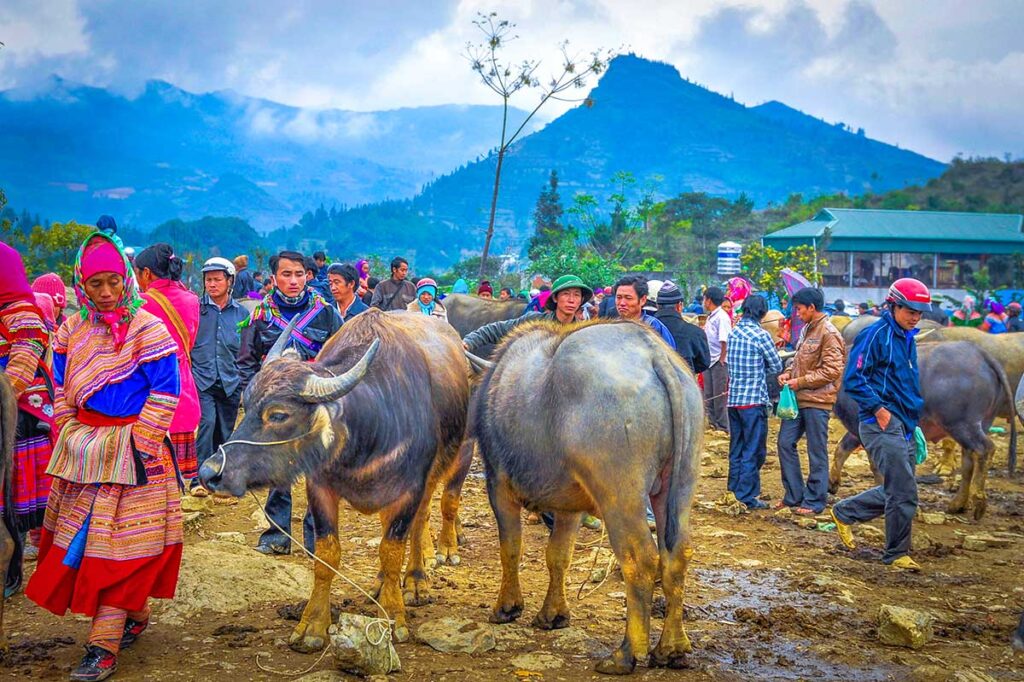
Unlike the central market in Sapa town, which caters more to tourists, the markets around Sapa remain mostly untouched by mass tourism. Many of them see very few foreign visitors, so the experience is raw, local, and unfiltered. You’ll see how people really live, work, and interact in this part of the country.
A paradise for photographers
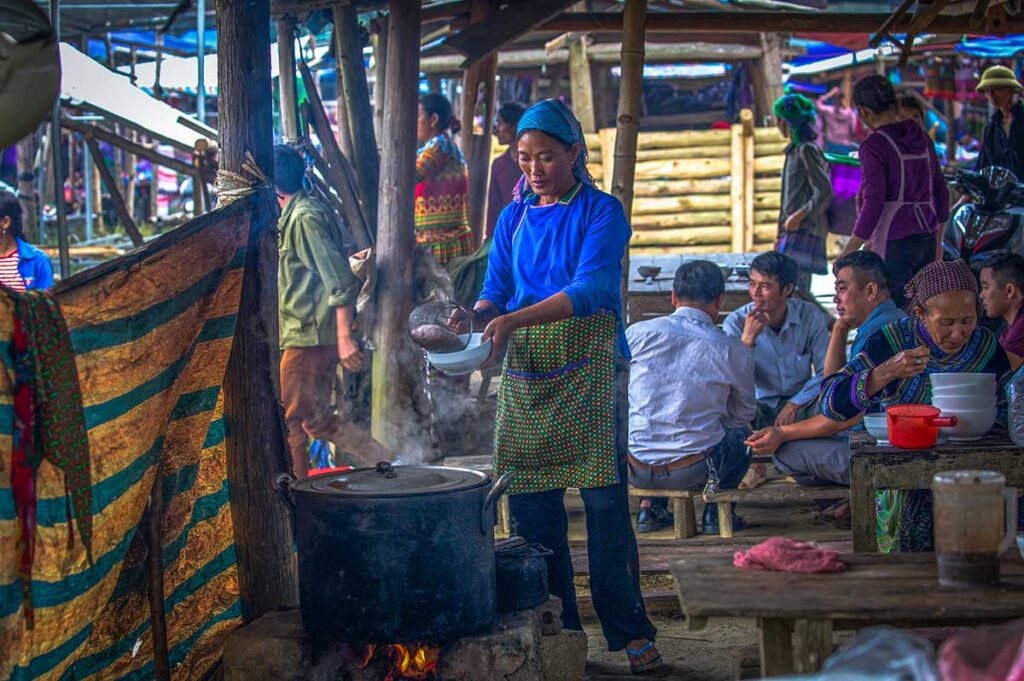
From vibrant costumes and market scenes to portraits full of character, the markets offer countless photo opportunities. Whether you’re into candid street-style shots or travel documentary-style photography, these markets are a dream setting for capturing the culture of northern Vietnam.
A chance to interact with multiple ethnic groups
Sapa is home to a variety of ethnic groups, including H’mong, Dao, Tay, and Giay. On market day, you’ll see them all in one place—each with their own clothing, language, and traditions. This mix is something you won’t easily find elsewhere in Vietnam.
What you can see at the markets around Sapa
What’s on offer at these markets goes far beyond food and souvenirs. Here’s what you might come across:
- Traditional textiles, fabrics, and handmade clothing
- Fresh vegetables, herbs, wild honey, and mountain spices
- Locally distilled rice wine
- Farm tools and household goods
- Mobile phone accessories and random electronics
- Hair salons set up on the roadside
- Food stalls selling noodles, grilled skewers, and sticky rice
- Livestock such as pigs, chickens, ducks, buffaloes, and cows
- People drinking rice wine, socializing, or just watching the crowd
- Children running around while parents shop
Note: The exact setup can vary by market. Some may not have livestock sections or certain product types depending on their location and size.
How to visit the markets around Sapa
Visiting the markets around Sapa is one of the most rewarding experiences in northern Vietnam, but it does require some planning. Many of these markets are in remote areas, deep in the mountains. While distances might seem short on the map, the travel time is often much longer due to narrow, winding mountain roads—not modern highways.
That means visiting a market can easily take 2 hours or more one way, depending on which one you choose. It’s a full or at least half-day activity, and best combined with other nearby sights or villages along the route.
Looking for a tour that includes a local Sapa market?
Many of our Sapa tours include visits to ethnic minority markets—combined with trekking, cultural experiences, or sightseeing by car.
Check out our full tour selection below.
If you only need a day trip to one specific market, feel free to use the request form at the bottom of the page.
Here are the main ways to reach the markets:
1. Joining a tour (only for Bac Ha Market)
The only organized group tours available are to Bac Ha Market, the most famous market around Sapa. These group tours typically leave from Sapa by bus and return in the afternoon. The big advantage here is cost—Bac Ha is far (about 100 km), and joining a shared tour is much cheaper than renting a private car.
However, for all other markets, there are currently no group tours available.
2. Renting a car with driver
For most of the smaller, lesser-known markets, your best option is renting a private car with a driver. This gives you the flexibility to stop at viewpoints or villages along the way and travel at your own pace. However, keep in mind that most drivers are not professional guides—they’ll drive you there and back, but won’t necessarily walk with you through the market or explain things along the way.
If you prefer more context and cultural background during your visit, you can request a separate guide to accompany you.
Arranging a driver in Sapa
Need help booking a private car with driver to explore one of the markets around Sapa? We can help arrange everything—reliable transport, flexible departure times, and optional guides to walk with you at the market.
3. Driving a motorbike yourself
Renting a motorbike is the cheapest way to reach the markets, but it’s only recommended for experienced riders. The roads are mountainous, winding, and long—often requiring several hours of riding there and back. While traffic is generally light, the driving conditions can be tough, especially in bad weather.
Best markets around Sapa
Below you’ll find a list of the best markets around Sapa—organized by day of the week, not by ranking. Each market is unique in its location, atmosphere, and the ethnic groups who attend. Use this overview to help plan your trip based on your travel dates and interests.
1. Sapa Market (daily)
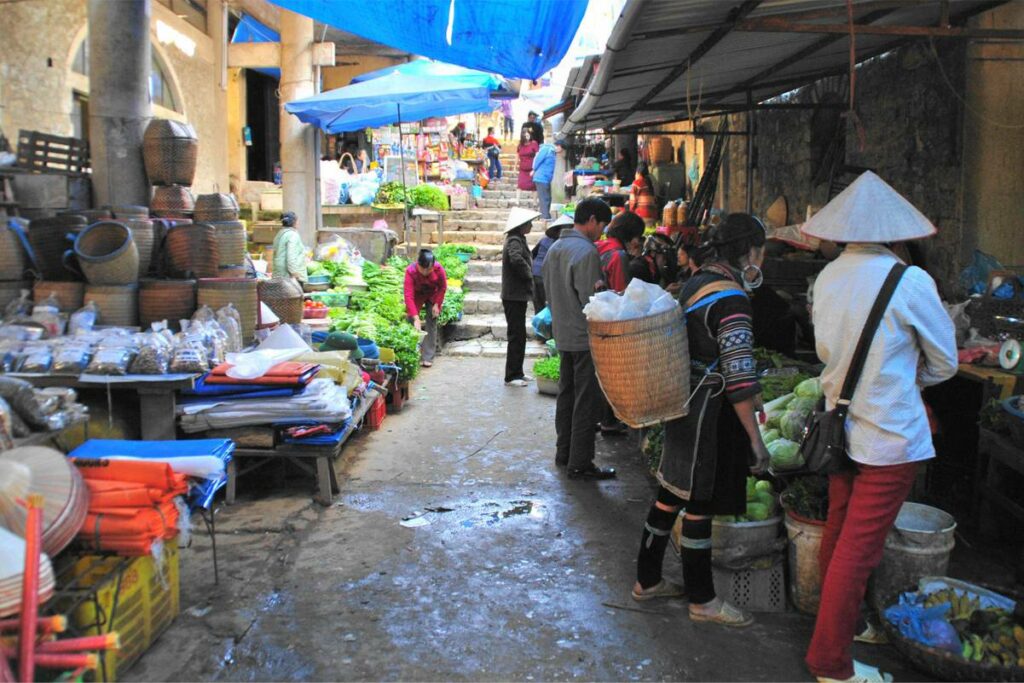
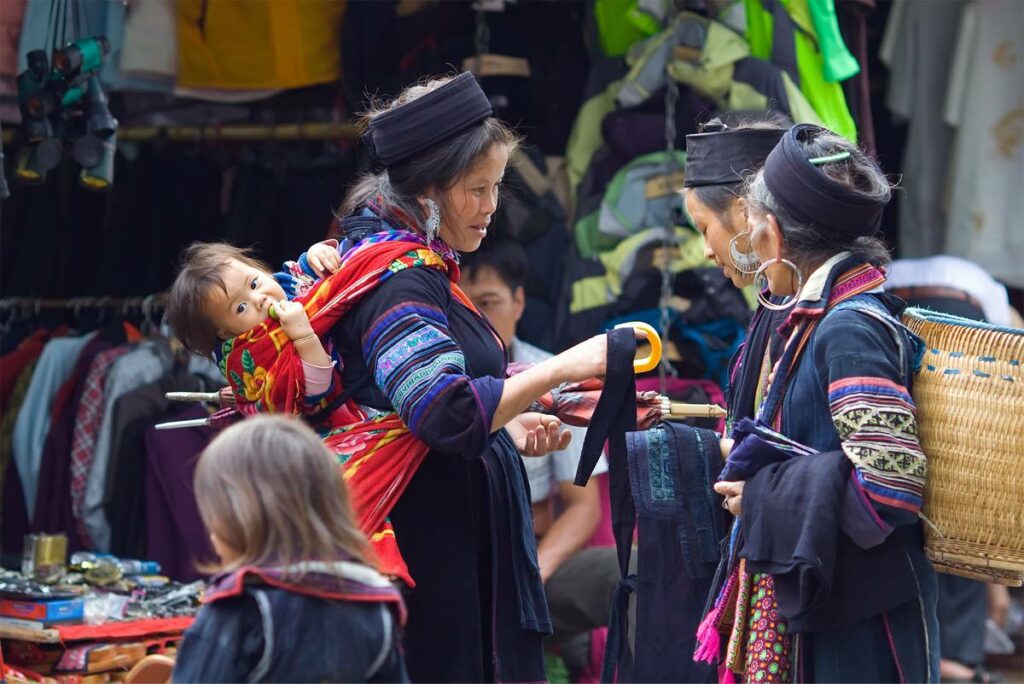
The central market in Sapa is the most accessible, with ethnic minorities visiting from nearby villages to sell produce, handicrafts, and textiles. While it doesn’t offer the raw authenticity of rural markets, it’s a convenient place to see colorful Hmong and Dao people in their traditional clothing, especially in the morning. On Saturday evenings, the Sapa Love Market takes place here—a tradition once used for courtship, though today it’s more of a tourist-oriented cultural display.
You can learn more in our complete guide to Sapa Market.
- Travel Time: Walking distance if staying centrally
- Market Day: Daily (Sapa Love Market on Saturday evening)
- Distance from Sapa: In town
- Location: Map
2. Coc Ly Market (Tuesday)
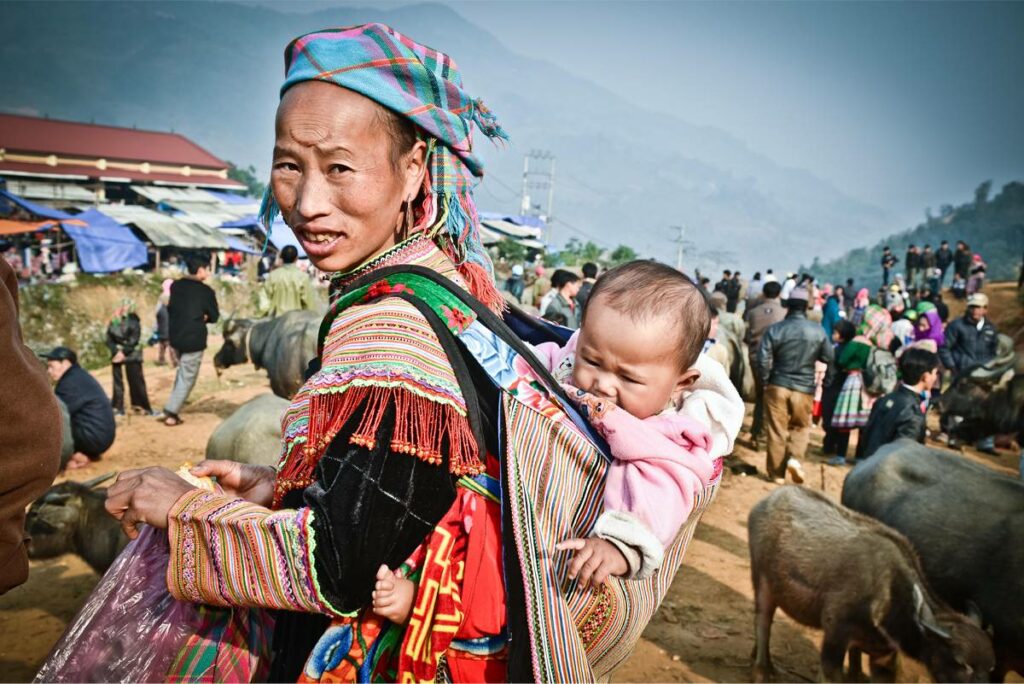
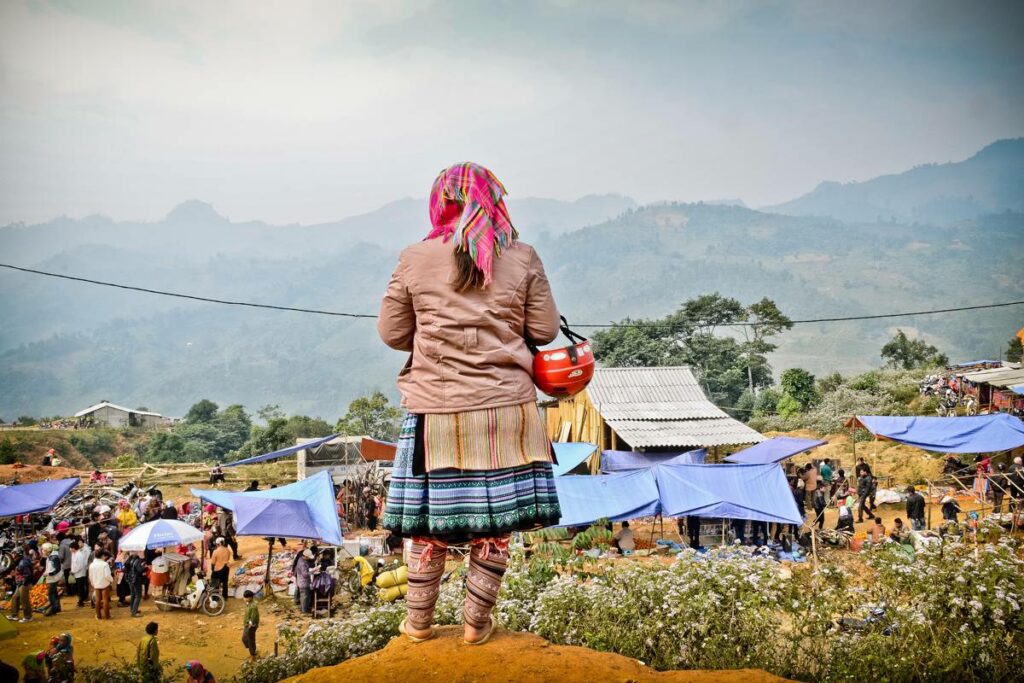
Coc Ly Market is a peaceful, mid-sized market held along the banks of the Chay River. It draws several ethnic groups, including the Flower Hmong, Black Dao, and Nung people. This Tuesday market is known for its warm, welcoming atmosphere and is often combined with a boat trip along the river or a short visit to nearby villages. While not as large as Bac Ha, it’s less commercial and offers a more relaxed experience.
Full details are in our Coc Ly Market guide.
- Market Day: Tuesday
- Distance from Sapa: 80 km
- Travel Time: ~2.5 hours by car
- Location: Map
3. Sin Cheng Market (Wednesday)
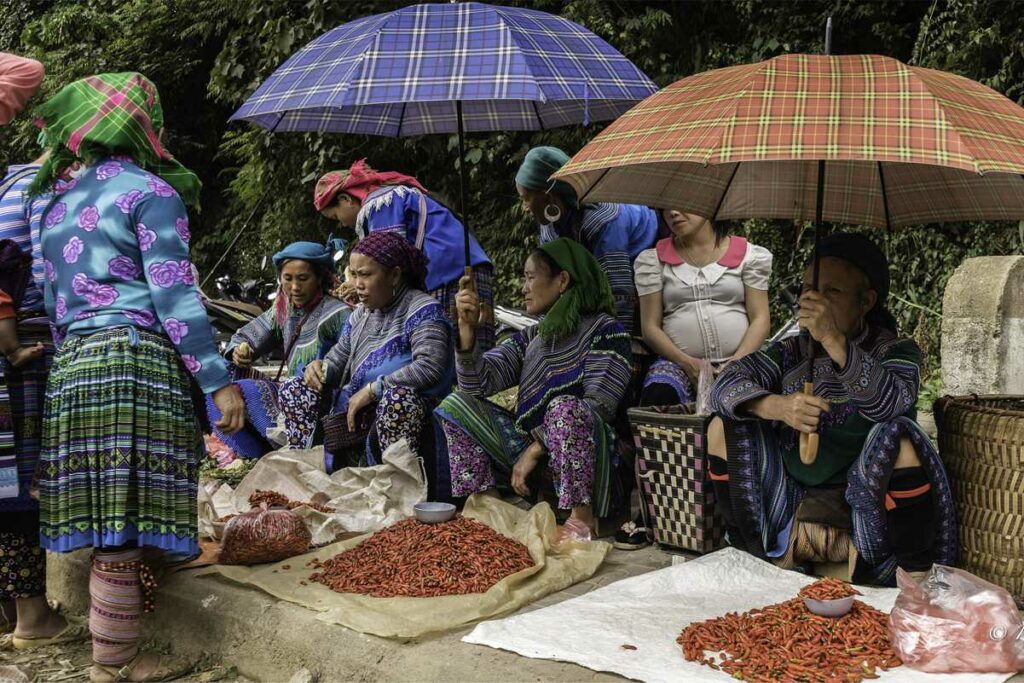
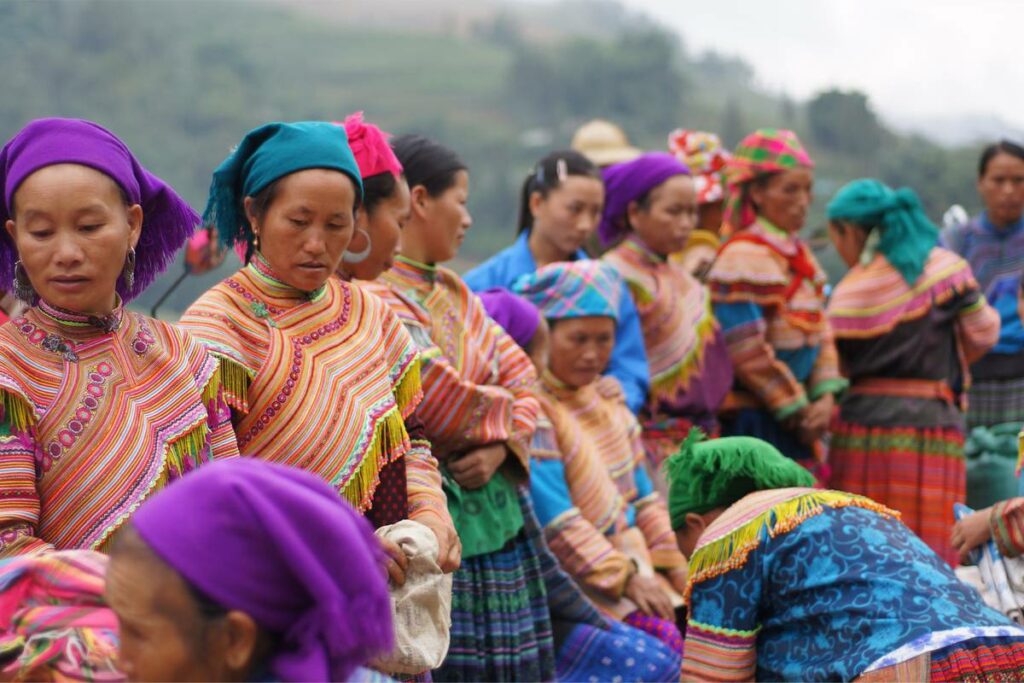
Sin Cheng Market is one of the most remote and least visited markets around Sapa, located near the Chinese border. It’s a chaotic and lively scene where Flower Hmong, Black Dao, Tay, and Ha Nhi minorities trade everything from handmade fabrics to livestock. The market isn’t very large, but it feels raw and untouched, offering an incredibly local experience for adventurous travelers.
Because of its location, the road conditions can vary, and it’s best visited with a private car and driver. You’ll find few other tourists here, and it’s ideal if you want to photograph authentic, everyday moments.
Explore more in our Sin Cheng Market guide.
- Market Day: Wednesday
- Distance from Sapa: 130 km
- Travel Time: ~4 hours by car
- Location: Map
4. Cao Son Market (Wednesday)
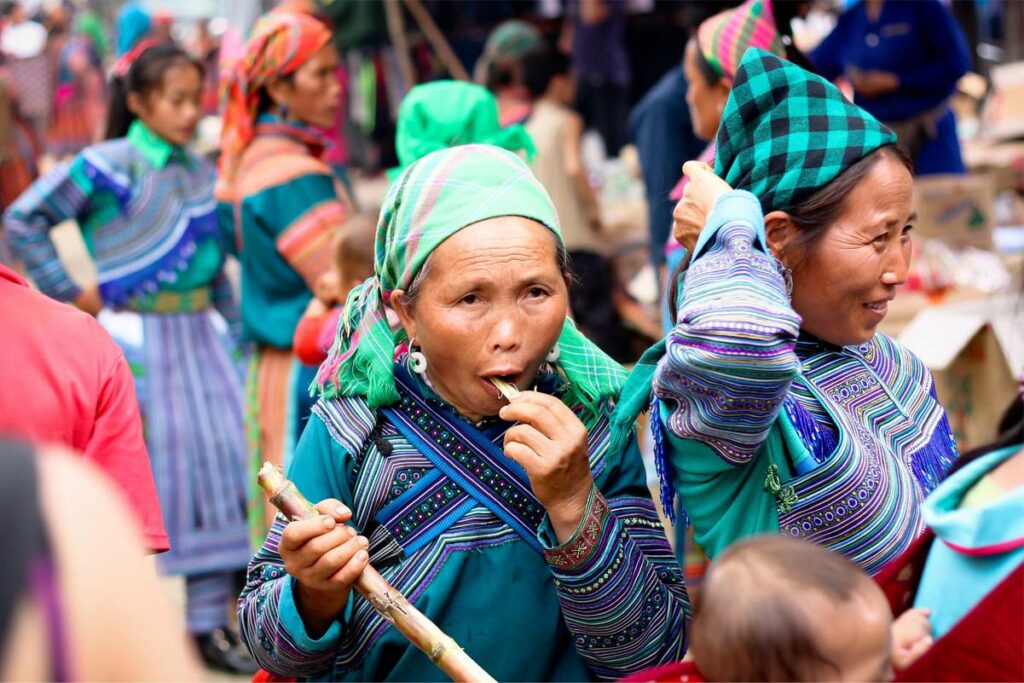
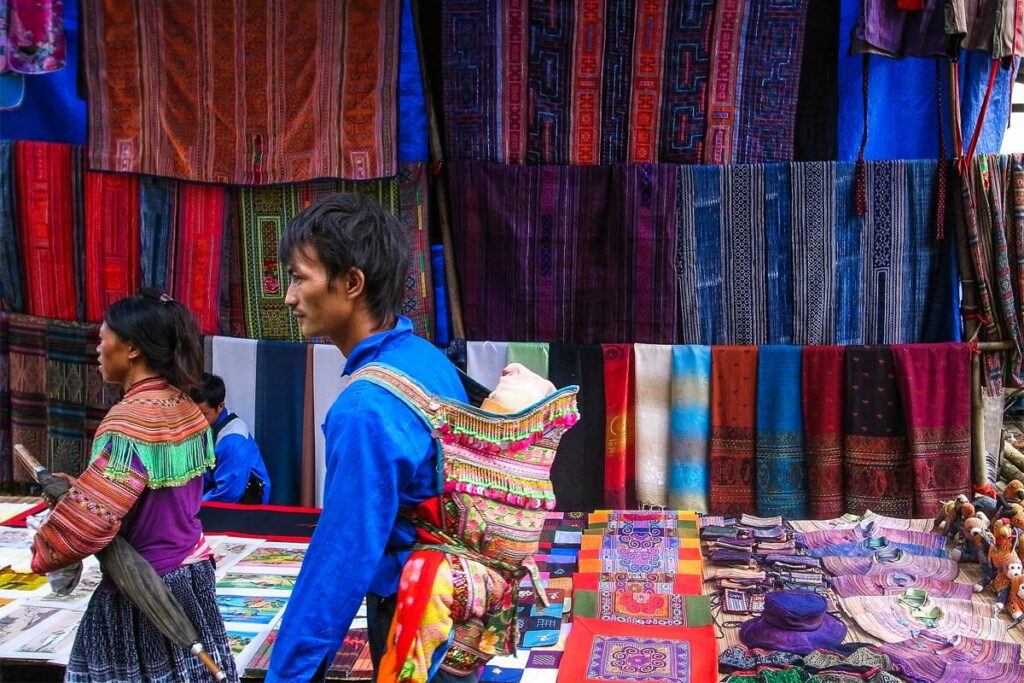
Tucked between misty hills and forested peaks, Cao Son Market is a scenic mid-sized market surrounded by stunning nature. It’s popular with locals from the Tay, Hmong, and Phu La groups who come to sell forest products, herbal medicines, homemade wine, and livestock. Compared to larger markets, Cao Son feels quieter and more connected to daily life.
The road to Cao Son is winding and less traveled, making it a great option for those seeking a market experience without large tourist groups. The mountain views on the way are a bonus.
Plan your visit with our Cao Son Market guide.
- Market Day: Wednesday
- Distance from Sapa: 90 km
- Travel Time: ~3 hours by car
- Location: Map
5. Lung Khau Nhin Market (Thursday)
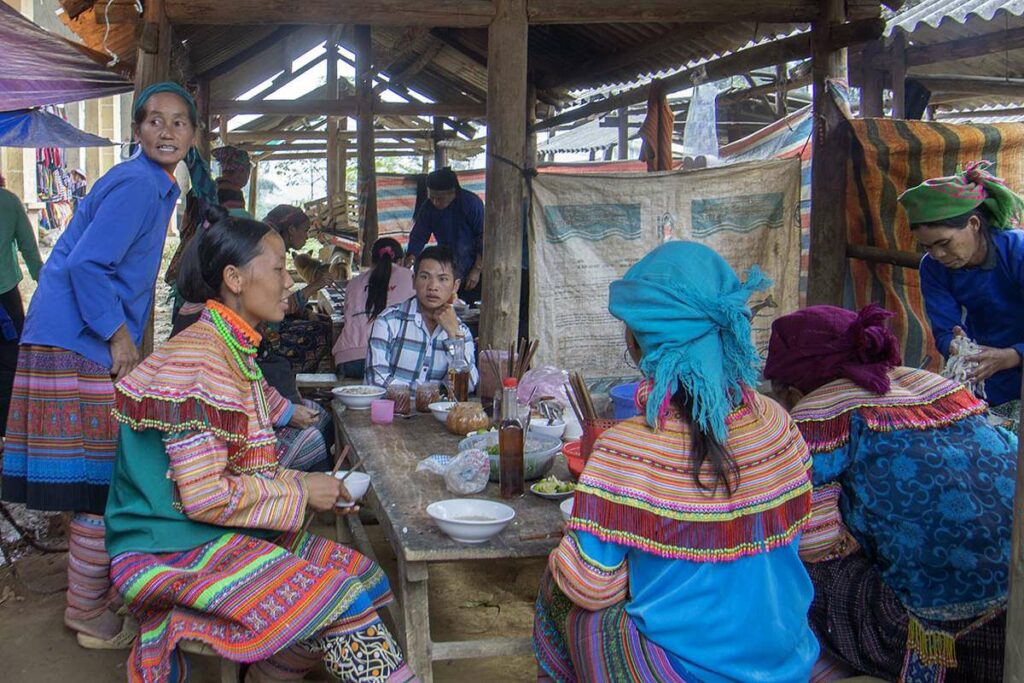
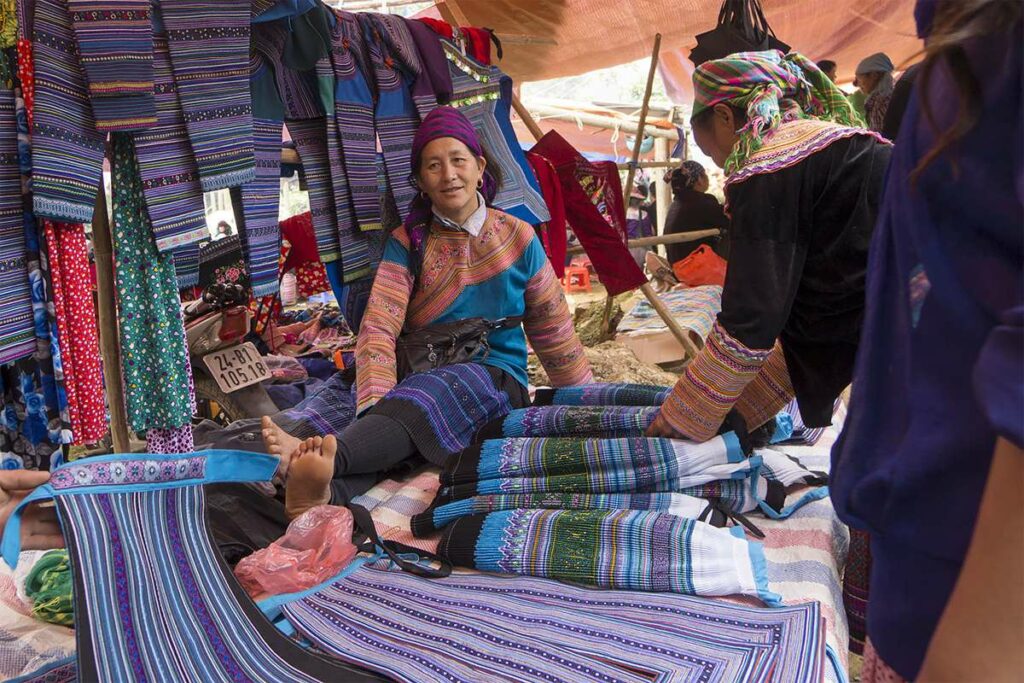
Perched high in the mountains near the Tram Ton Pass, Lung Khau Nhin Market is one of the most picturesque markets around Sapa. It’s a smaller market, but the setting—terraced hills, foggy pine forests, and distant peaks—makes it feel special. Local ethnic groups, including the Hmong and Nung, come early to trade colorful textiles, herbal medicine, and fresh produce.
The market starts around 7:30 AM and winds down by early afternoon, so it’s important to arrive early. The altitude can make it chilly in the morning, especially in winter, so dress accordingly.
More info in our Lung Khau Nhin Market guide.
- Market Day: Thursday
- Distance from Sapa: 80 km
- Travel Time: ~3 hours by car
- Location: Map
6. Can Cau Market (Saturday)
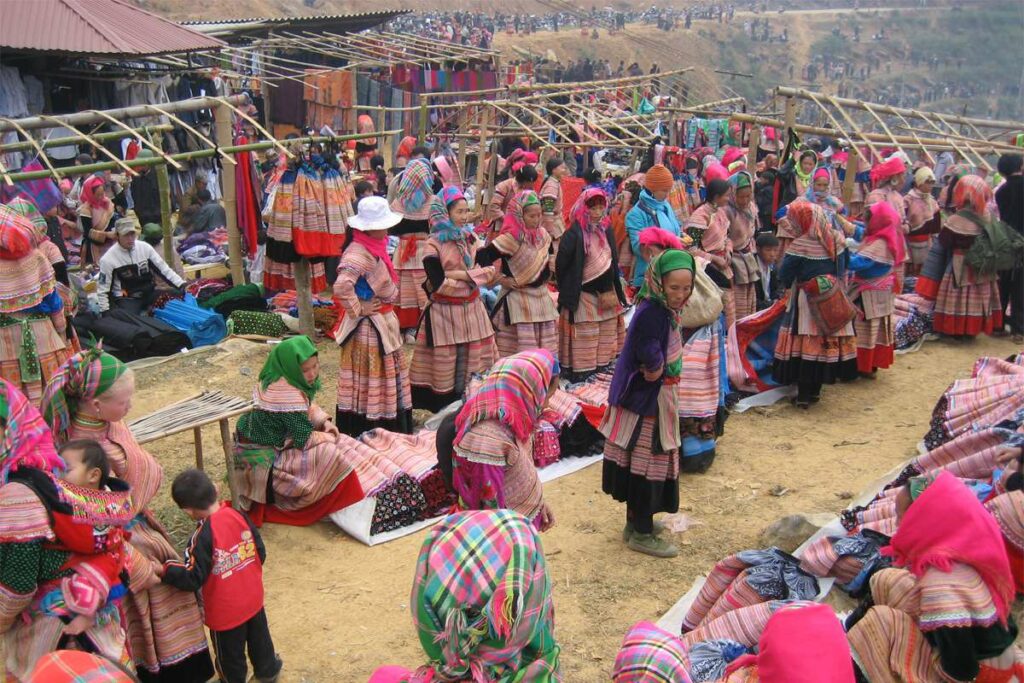
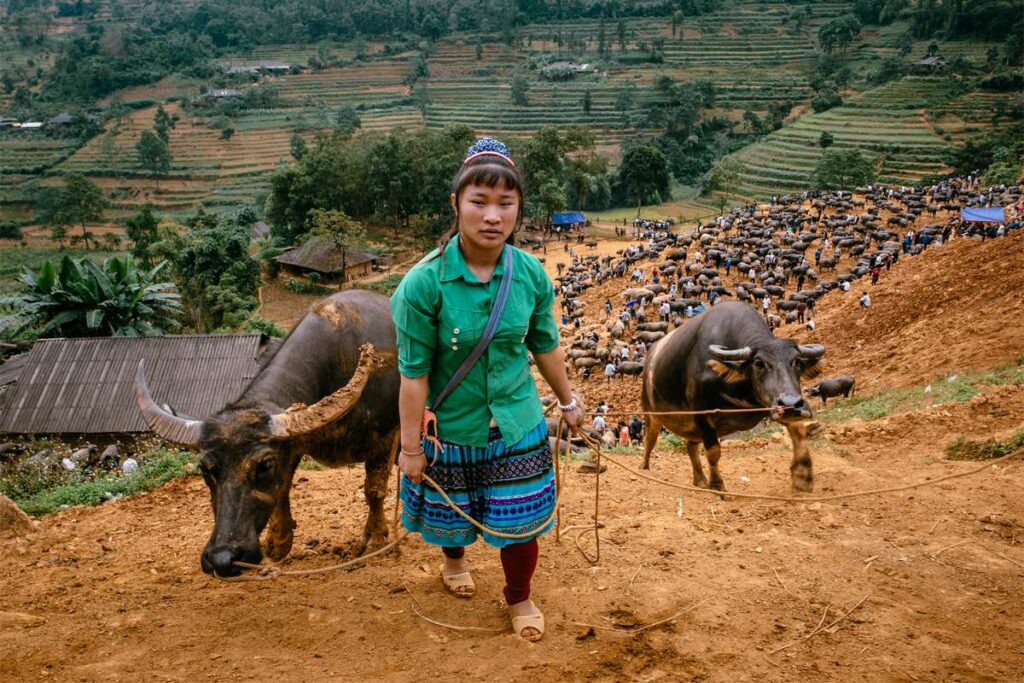
Can Cau Market is one of the most vivid and culturally rich markets in North Vietnam, held every Saturday near the Chinese border. It’s best known for its bustling cattle market, where buffaloes, cows, and even dogs are traded. The Flower Hmong make up the majority of traders here, easily recognized by their vibrant embroidered outfits.
Unlike many markets, Can Cau is partly held along a mountain slope, creating a layered, dramatic setting. Arrive early to see horse caravans transporting goods, and be prepared for muddy paths during the rainy season.
Discover more in our Can Cau Market guide.
- Market Day: Saturday
- Distance from Sapa: 120 km
- Travel Time: ~4 hours by car
- Location: Map
7. Bac Ha Market (Sunday)
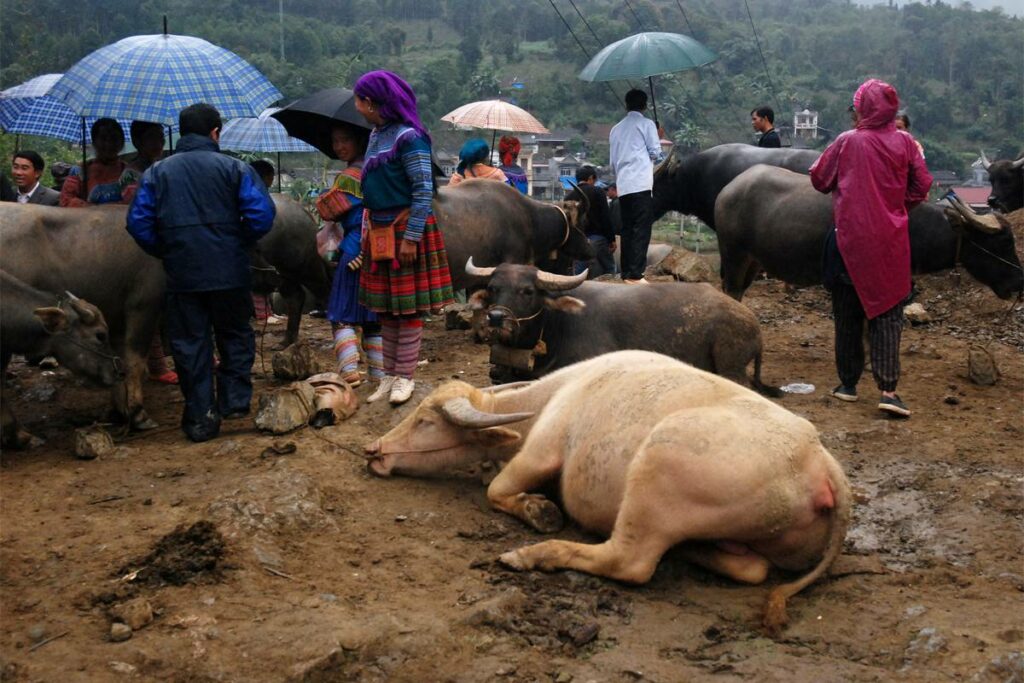
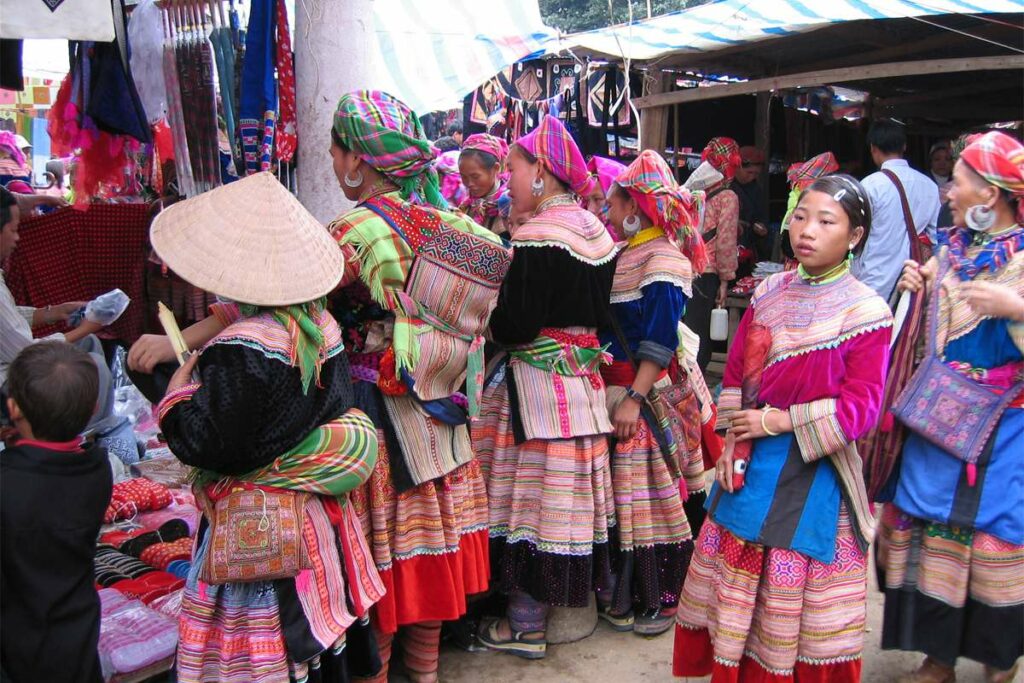
Bac Ha Market is the largest and most well-known of all the markets around Sapa. Every Sunday morning, thousands of ethnic minority people—especially Flower Hmong—gather here to trade everything from handmade textiles to water buffalo. It’s busy, vibrant, and undeniably touristy, but still a rewarding experience if timed right.
To avoid the crowds, arrive before 9:00 AM—most group tours show up between 10:00 and 11:00. The market is spread out across different sections, including food, clothing, household items, and livestock. It’s ideal to combine a visit with nearby sights or a night in Bac Ha town for a more relaxed pace.
Read our full Bac Ha Market guide for tips and what to expect.
- Market Day: Sunday
- Distance from Sapa: 100 km
- Travel Time: ~3 hours by car or tour bus
- Location: Map
8. Muong Hum Market (Sunday)
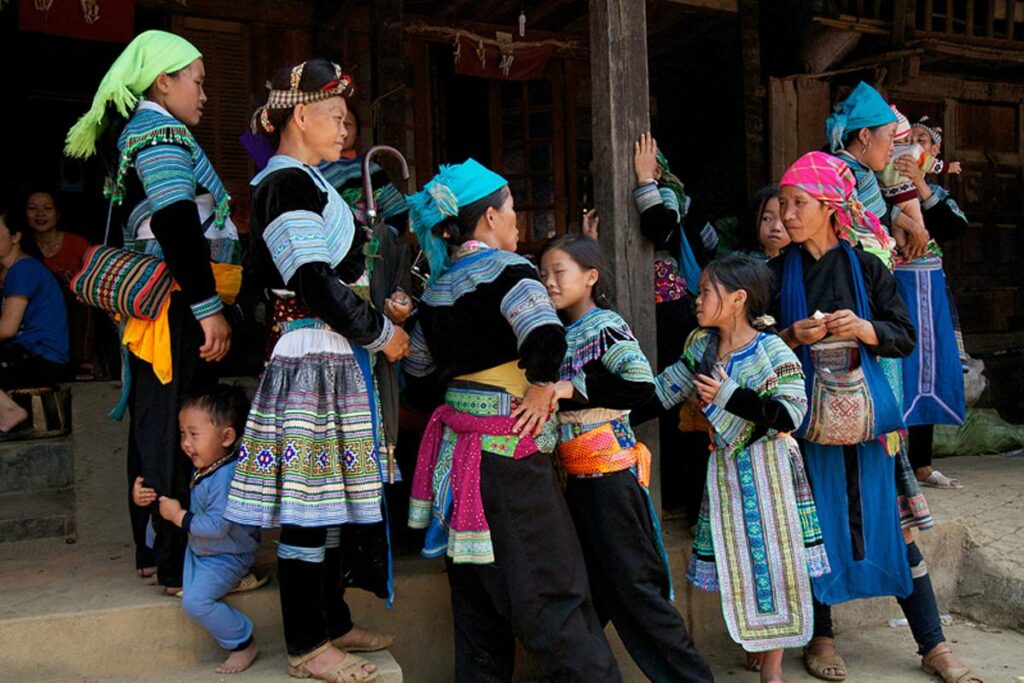
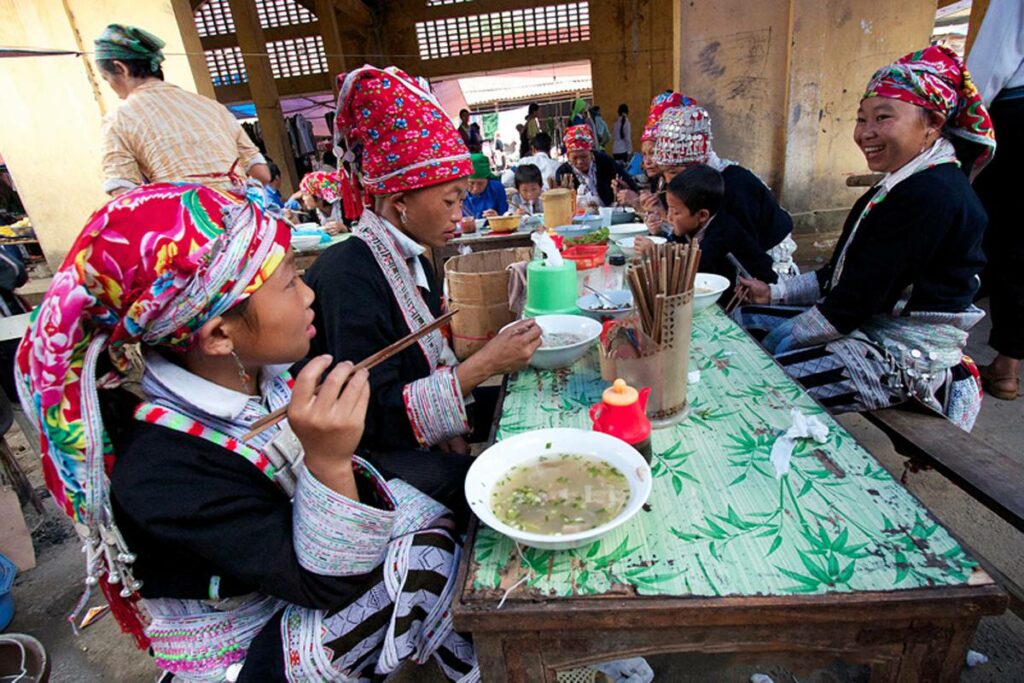
If you’re looking for a more off-the-beaten-path experience, Muong Hum Market is a great alternative to Bac Ha. Located in a beautiful valley surrounded by terraced rice fields and streams, it attracts various hill tribes such as the Ha Nhi, Dao, and Hmong. The market is less commercial and rarely visited by tourists, offering a more authentic glimpse into local life.
The setting itself makes the visit worthwhile—especially on misty mornings when the valley feels otherworldly. Keep in mind the road to Muong Hum is mountainous but scenic, with chances to stop at viewpoints or nearby villages along the way.
Full details in our Muong Hum Market guide.
- Market Day: Sunday
- Distance from Sapa: 40 km
- Travel Time: ~2 hours by car or motorbike
- Location: Map
Tips for visiting markets around Sapa
Make the most of your experience with these practical tips for visiting the minority markets near Sapa.
Plan your visit around the market day
Most ethnic markets around Sapa are only held once a week, early in the morning. Make sure your itinerary aligns with the right day—don’t assume there’s a market every day. If you’re staying longer, you can even combine nearby markets like Coc Ly (Tuesday) and Bac Ha (Sunday).
Markets are far—Make it a full day
Even if a market looks close on the map, mountainous roads mean long travel times—often 2 hours each way. For a more rewarding experience, combine the market with scenic stops, short treks, or a local lunch. In places like Bac Ha, it’s worth staying overnight and being the first to arrive at the market the next morning.
Go with a guide, Not just a driver
Markets are much more interesting when you understand what’s going on. A local guide can explain the goods, translate conversations, and take you to more local areas off the main road. Drivers don’t always offer this. You can request a guide or custom tour to match your interests and travel style.
Be respectful with photography
The markets around Sapa are a dream for photographers. The colorful outfits, mountain backdrops, and local scenes are extremely photogenic. But always ask—either verbally or with a gesture—before taking close-up portraits. Not everyone is comfortable being photographed.
Not everything is easy to watch
Many markets have livestock sections, where cows, pigs, buffaloes, and chickens are sold. It’s part of daily life, but can be a bit intense if you’re not used to it. The butcher stalls also display meat openly, which can be confronting to some visitors. Be mentally prepared—or skip those sections.
Extend your trip to Ha Giang for more markets
While this guide focuses on the markets around Sapa, northern Vietnam has many other regions with vibrant ethnic markets worth visiting. One of the best areas for this is Ha Giang, a province known for its high concentration of minority communities. If you’re planning to do the Ha Giang Loop — a scenic multi-day motorbike or car route through the mountains — you’ll naturally pass through the small towns of Meo Vac and Dong Van.
Try to time your trip so you’re there on a Sunday, when each hosts a lively local market. These markets offer a similar cultural experience to those near Sapa, but are easier to include in your trip since they’re directly along the route of the famous Loop. For a full list, see our markets in Ha Giang guide.
